Mining Precious Metals: Challenges and Triumphs
Mining precious metals is a complex and demanding process that involves highly skilled labor, heavy equipment, and significant financial resources. It is an industry that is essential to our modern way of life, providing the raw materials needed for countless products and technologies. However, it is also an industry that faces numerous challenges and restrictions.
In this article, we will take a closer look at the process of mining precious metals, the work involved, the difficulties and challenges that miners face, and the restrictions that govern the industry.
The Mining Process
Mining precious metals begins with the exploration of potential mining sites. This is done through a combination of satellite imagery, geological surveys, and ground-based exploration. Once a potential site has been identified, a team of experts will assess the feasibility of mining the site, taking into account factors such as the quality and quantity of the ore, the potential environmental impact, and the cost of extraction.
If the site is deemed suitable for mining, development can begin. This involves the construction of roads, buildings, and other infrastructure necessary to support mining operations. Heavy equipment, such as excavators and haul trucks, are brought in to extract the ore from the ground. The ore is then transported to a processing facility where it is crushed, ground, and treated with chemicals to extract the precious metals.
Once the precious metals have been extracted, they are transported to a refining facility where they are further processed to remove impurities and create a product that can be used in manufacturing. The final step in the mining process is reclamation, which involves restoring the site to its original condition.
The Work Involved
Mining precious metals is a highly specialized and skilled profession that requires a range of expertise. Heavy equipment operators, geologists, chemists, and environmental scientists are just a few of the professionals who are involved in the mining process.
Mining is also physically demanding work that requires long hours and the ability to work in challenging conditions. Miners must follow strict safety procedures to avoid accidents and injuries, and they must constantly monitor the environmental impact of their operations.
The Difficulties
Mining precious metals is not without its challenges. Mining sites are often located in remote areas with difficult terrain, making transportation of equipment and supplies a logistical challenge. Unpredictable weather conditions can also disrupt mining operations, particularly in regions prone to extreme weather events.
The geological structure of mining sites can also pose challenges, with complex mineral deposits making extraction more difficult. Furthermore, mining is a capital-intensive industry, requiring significant financial investment to establish and operate mining operations. The risks associated with mining, such as cave-ins and accidents, also make it a potentially dangerous industry.
The Restrictions
Mining precious metals is governed by numerous restrictions and regulations. Environmental regulations and permits are required to ensure that mining operations do not harm the environment or nearby communities. There is also limited availability of suitable mining sites, and community opposition can often prevent mining operations from going ahead.
Access to necessary resources, such as water and energy, can also be a limiting factor for mining operations. Social and political pressures, such as labor laws and trade agreements, can also restrict the operations of mining companies.
Conclusion
Mining precious metals is a complex and challenging industry that plays an essential role in our modern way of life. The process of mining involves a range of skilled professionals, heavy equipment, and significant financial investment. However, it is an industry that faces numerous challenges and restrictions, including environmental regulations, community opposition, and limited access to resources.
Despite these challenges, the mining industry continues to innovate and find ways to overcome obstacles. By embracing new technologies and responsible mining practices, the industry can continue to meet the demand for precious metals while ensuring that the environment and surrounding communities are protected. As consumers, we have a role to play in supporting responsible mining practices and encouraging companies to prioritize sustainability and ethical practices in their operations
Below please see some interesting data
Gold mine production in 2022 was about 3,750 tons, with a value of about $60,000 per Kg; the total $ value mined in 2022 is over 200 T$. Gold “urban mining”, which is gold refined from scrap, was about 1,200 tons which is one quarter of the total production.
About two-thirds of the total gold quantity in the world, which is about 200,000 tonnes, has been mined since 1950.
Some more numbers for 2022 mining
Metal t Ounces $ Value
Gold 118,000,000 ~212 T$
Silver 850,000,000 ~17 B$
Platinum 5,900,000 ~5.9 B$
Palladium 6,500,000 ~13 B$
Rhodium 720,000 ~9.3 B$
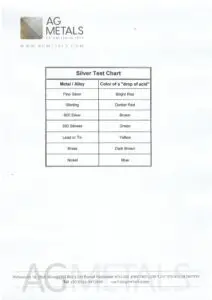
Assessing Silver Purity: A Guide to Acid Testing and Identifying Silver Content
Assessing Silver Purity: A Guide to Acid Testing and Identifying Silver Content Testing the purity of silver with acid is a traditional and efficient technique
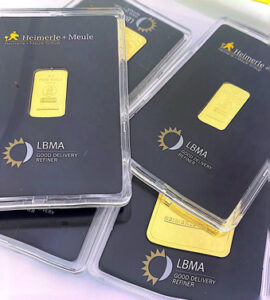
Securing Your Wealth: The Essential Guide to Investing in Physical Gold
Securing Your Wealth: The Essential Guide to Investing in Physical Gold Welcome to our website! My name is Ami Gur, the proud founder of
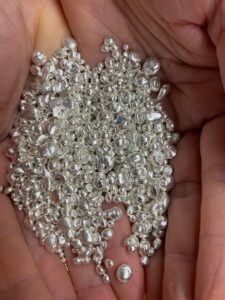
Estimating Surface Area of Silver Grains: From Measurements to Calculations
“Estimating Surface Area of Silver Grains: From Measurements to Calculations“ Greetings, metallurgy enthusiasts! Today, we’re delving into the practical side of estimating the surface area
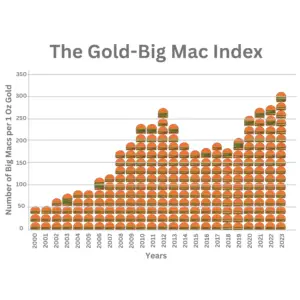
The Big Mac Index and the Golden Gauge
The Big Mac Index and the Golden Gauge: A Tale of Economic Strength Introduction: The Big Mac Index, introduced by The Economist in 1986, has
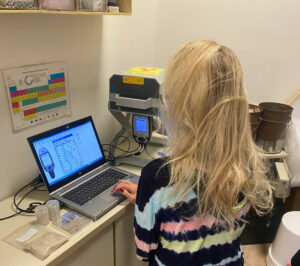
Money Value of Used Auto Catalytic Converter
Evaluating PGM Content, and Estimating the “Money Value” of Auto Catalytic Converter This article is a step-by-step guide for how to evaluate an auto catalytic
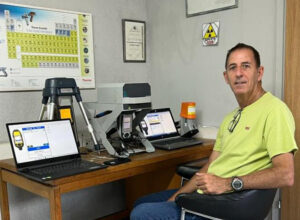
AVOIDING XRF common assay mistakes
How To Avoid XRF Assay Mistakes When Assaying Precious Metals Introduction In this article, we will address a critical issue – avoiding XRF (X-ray Fluorescence)
